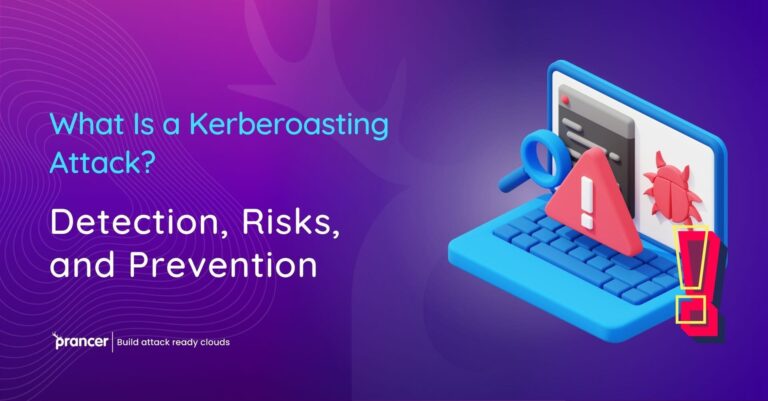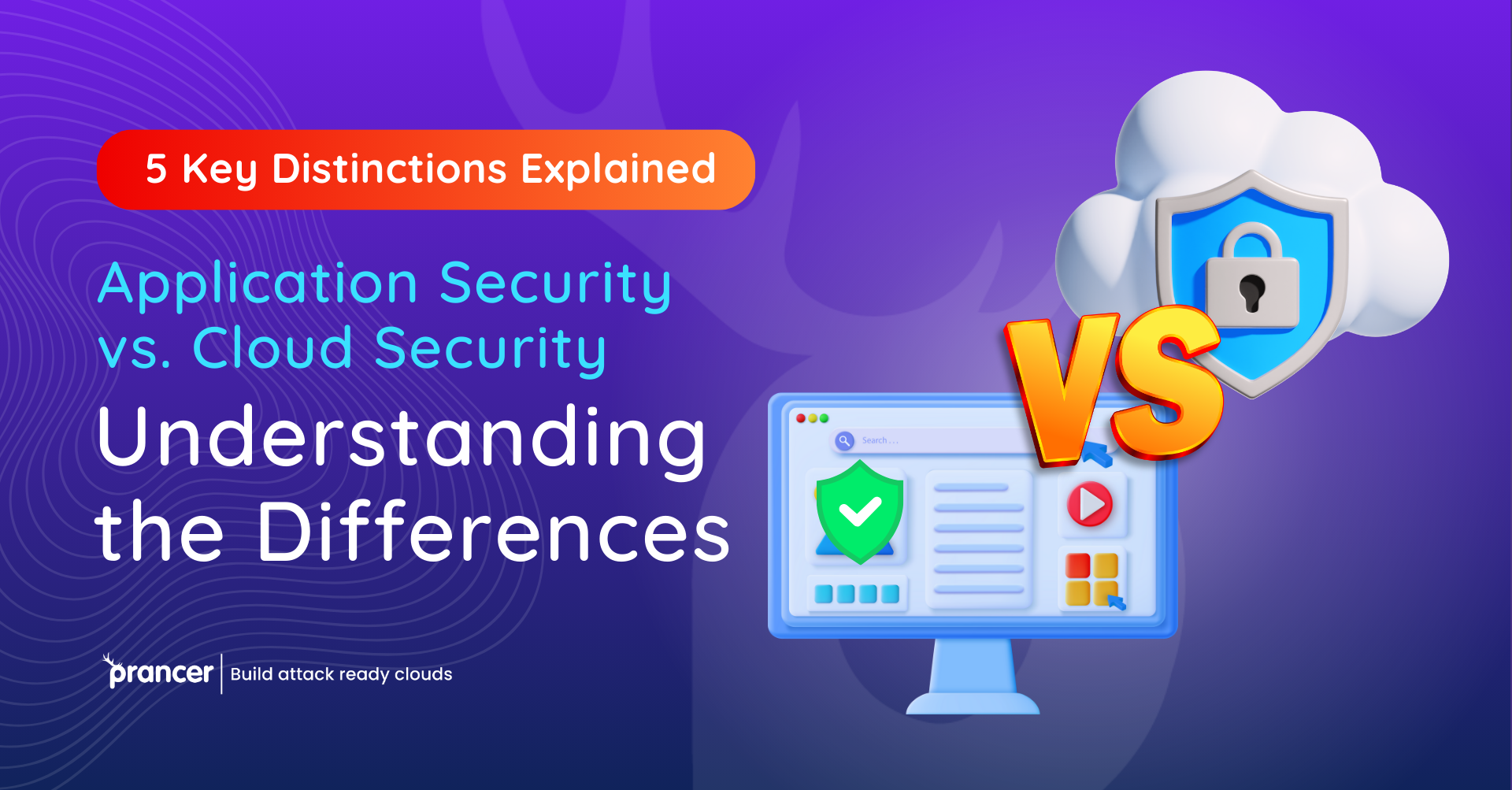

In the ever-evolving landscape of cybersecurity, “application security” and “cloud security” are also among the buzz words that keep making rounds quite often. In this blog, our focus will be on the difference between application security vs cloud security and we would dissect their challenges along with solutions in a digital playing field. As we continue on, one crucial tool for both fields that examines vulnerabilities in each area is automated penetration testing and the part it plays. Teasing apart what these differences are, becomes important to companies like Prancer which is at the vanguard of ensuring strong security in both cases.
At the basic level, you need to understand that both application security and cloud security refers in one way or another securing data which we cannot avoid for day to day activities. For application security, the focus is on ensuring that software applications are not jeopardized by any threats which might compromise their functionality or even data integrity. Differently, cloud security specifically deals with securing configurations and deployment of those systems in addition to the data that stays inside them. Prancer is a cybersecurity leader and employs advanced practices in both these areas to ensure the security of digital resources.
Application security is more focused on the code of the software itself and how it behaves revealing any form or type of vulnerability that can be used. However, cloud security extends to protecting the infrastructure and network that host these applications.
In this case, the automated penetration testing will be indispensable; it can simulate an attack on both application code and cloud infrastructure providers and find vulnerabilities when they occur.
The compliance landscape in application security is so different from cloud security. Application security necessitates following the standards for software development established by governing bodies, while cloud security often requires adhering to additional regulations such as the General Data Protection Regulation (GDPR) on data protection.
Prancer ensures that both these compliance matters are addressed by having a defined security protocols.
Another aspect, where application security vs cloud security , happen to be completely different is the data storage. While application security is about securing data within the app, cloud security takes care of storage and management aspects of data in a general sense.
Prancer is an automated penetration testing provider with specialization in on premise and cloud environments.
The nature of threat landscape in application security are code injections, broken authentication etc., whereas cloud securities threats often include unauthorized data access and insecure interface.
Each of these security challenges is addressed by providing comprehensive strategies that focus on specific threats.
However, the difference between application security and cloud security tools and solutions is that they are often much more specialized. Static and dynamic analysis tools are used for application security, while encryption, identity managementaccess management tools are utilized.
Prancer then takes a combination of these tools and adapts the solutions for use in each different security domain.
In the fast-evolving cybersecurity field, differentiating between application security and cloud security is essential for effective digital protection. Application security focuses on protecting software from threats to its code and functionality, while cloud security refers primarily to how safe the infrastructure is in managing data in cloud environments. The Prancer uses an automated penetration testing strategy that, in both domains, helps it detect weaknesses in software applications and cloud platforms. Although application security handles problems like code injections and faulty authentication, cloud security deals with threats including unauthorized data. Prancer deftly moves within these very different landscapes, using specialized tools such as static analysis for applications and encryption of cloud security to ensure a comprehensive defense against both fronts.
Application security and cloud data protection are increasingly important contributors to the cybersecurity conversation in today’s digital age. This blog hopes to address the differences between application security and cloud security while investigating their characteristic challenges and fixes within the virtual realm. At the center of this study is automated penetration testing, an essential tool used in identifying vulnerabilities within both domains. Knowing their differences is crucial to companies such as Prancer, which heads a move towards reinforcing security on both ends of the spectrum.
Application Security vs Cloud Security: Dissecting the Fundamentals
However, determining the basic differences between application security and cloud security is of great importance. Application security mainly focuses on protecting the software applications from threats that can jeopardize their functionality or data integrity. Contrastively, cloud security aims to provide a secure configuration and deployment of systems into the cloud as well protects data that is stored. As a cybersecurity innovator, Prancer uses intricate techniques in both spaces to protect digital assets.
Major Differences between Application and Cloud Security
Scope of Security Concerns: Application security focuses on the code of a software and possible weaknesses in this coding. Cloud security, however, encompasses such protection of infrastructure and networks that host these applications. Automated penetration testing is critical both in the simulation of attacks and identification of vulnerabilities.
Compliance and Regulations: The compliance terrain is very different between application and cloud security. Software development standards are key in application security while regulations like GDPR apply to cloud security needs. Prancer ensures compliance in both of these aspects through defined security protocols.
Data Storage and Management: In contrast, cloud security involves elements of secure data storage and management outside the app. When it comes to the field of automated penetration testing, Prancer has mastery over on-premise and cloud platforms.
Threat Landscape: Typically, in application security threats we may find code injection and broken authentication, whereas clouds face unauthorized data access through an interface that is not safe. Prancer also deals with the various threats by using comprehensive and targeted strategies.
Security Solutions and Tools: Application and cloud security tools and solutions are usually specialized. Application security relies on static and dynamic analysis tool while cloud security utilizes encryption and identity management tools. These tools are integrated by Prancer, customizing the solutions for every security field.
The Evolving Field of Cybersecurity: Differentiating Application and Cloud Security
In the dynamic and changing nature of cybersecurity, differentiating between application safety and cloud protection is crucial in digital security. Application security focuses on ensuring the safety of software from threats to its code and functionality. On the flip side, cloud security deals with protecting data within cloud environments. Through both domains, Prancer uses automated penetration testing to find flaws in software applications and cloud platforms. Application security tackles problems like code injection and authentication flaws, but cloud security prevents threats such as unlawful data access. Presently, Prancer effectively guides these different topographies by using specialized tools such as static analysis for apps and encryption in cloud security to provide reliable defense at both fronts.
Prancer’s Comprehensive Strategy to Digital Security
Prancer’s approach includes a holistic one; using automated penetration test to detect and fix deficiencies in the application as well as cloud domains. This is because, through this approach Prancer offers a wide spectrum of digital security services ranging from my application to whole cloud environments.
Automated penetration testing plays an important role in security.
Automated penetration testing is an anchor in Prancer’s cybersecurity armory. This approach would improve the speed, accuracy and detail of security assessments, helping Prancer to quickly detect vulnerabilities in both app as well
Staying Ahead of Cyber Threats
This proactive approach to cybersecurity exhibited by Prancer is aimed at staying ahead of any emerging threats. Prancer promises to maintain the security of its clients’ digital assets by keeping their automated pen testing techniques up-to-date so that they do not miss out on new challenges presented in application and cloud sec.
Tailor-made Security Solutions for Varied Needs
Acknowledging that every client has specific security requirements, Prancer designs application and cloud environments to offer the best protection. Through this customized approach, all aspects of a client’s digital infrastructure are secured from possible threats.
How Prancer Is Contributing to the Future of Cybersecurity.
With the cybersecurity field continuously developing, Prancer’s contribution to defining what it would be in a decade is growing too. Through their ground-breaking automated penetration testing, as well as domain expertise in application and cloud security areas, Prancer is not simply following the changes taking place within cybersecurity – they are propelling them.
The Digital Security Maze.
The differences between application security and cloud governance are important to understand given the complicity of today’s digital world. Considering Prancer’s knowledge of automated penetration testing and their all-inclusive approach to both domains, they are the leading provider of cybersecurity solutions. When Prancer is continually adjusting its strategies, it will cater to the changes in digital surroundings and thereby provide strong protection of virtual possessions for their customers facing a constantly changing cybersecurity environment.
To sum it up, application security and cloud security may seem closely related or interchangeable but as we have seen in this paper there is a difference between the two. Although, both share a common pursuit the preservation and protection of digital assets – methodologies used challenges faced and tools used are distant apart. Automated penetration testing is considered mainstream in both fields, as it helps detect vulnerabilities ahead of time. As a company, Prancer has personally made Augio know these distinctions in order to provide security solutions that are uniquely tailored for both Application Security and Cloud assigned.
